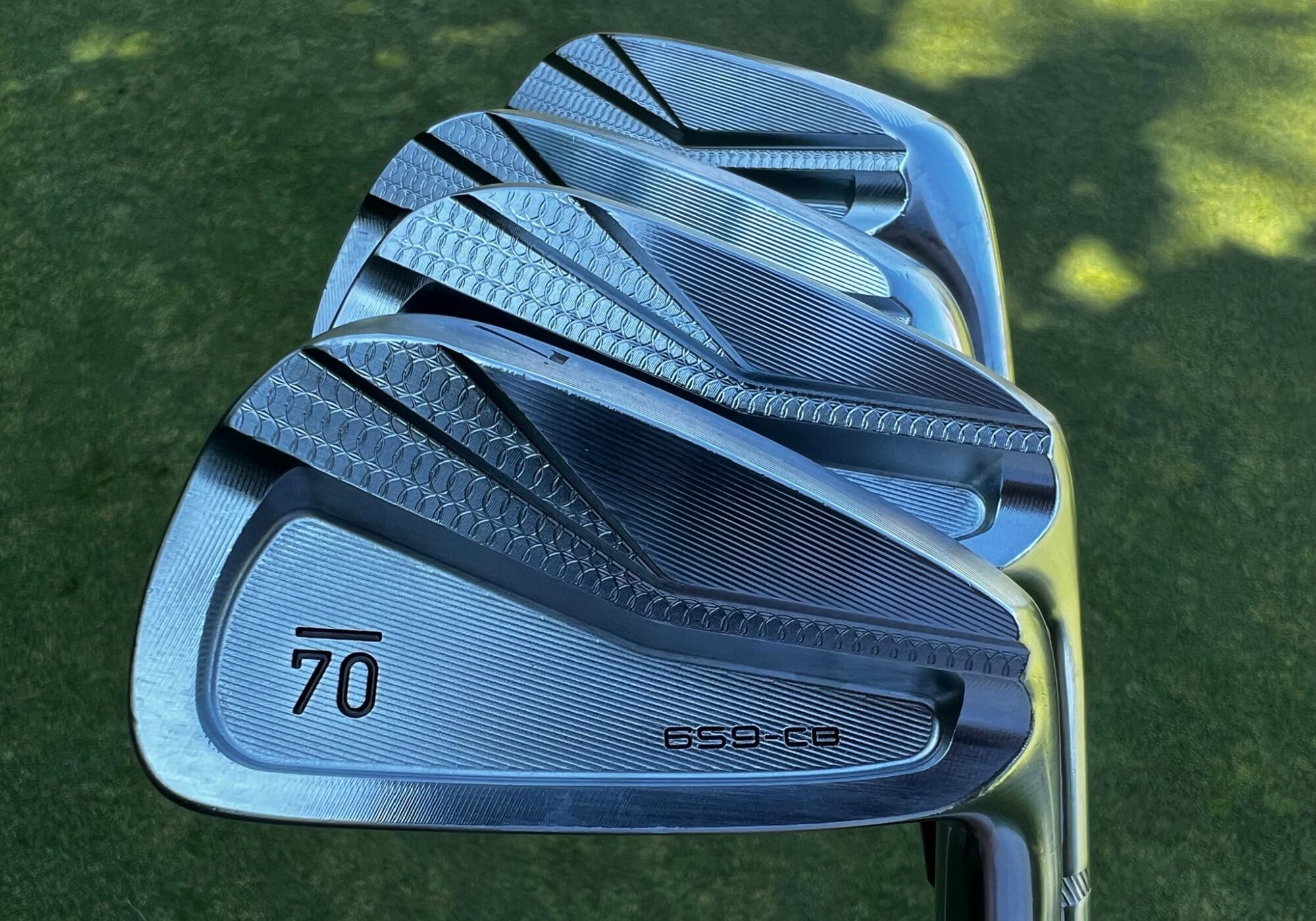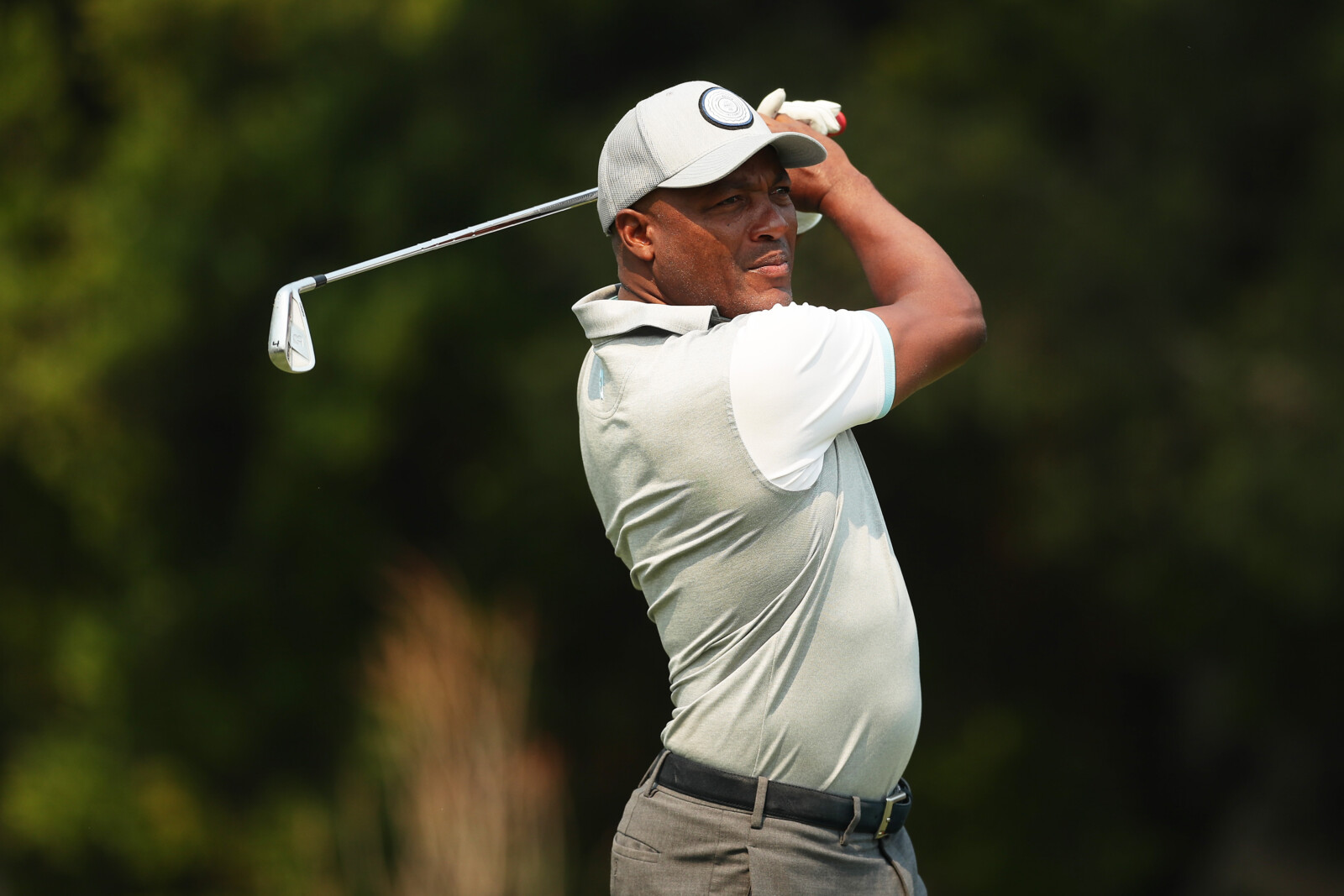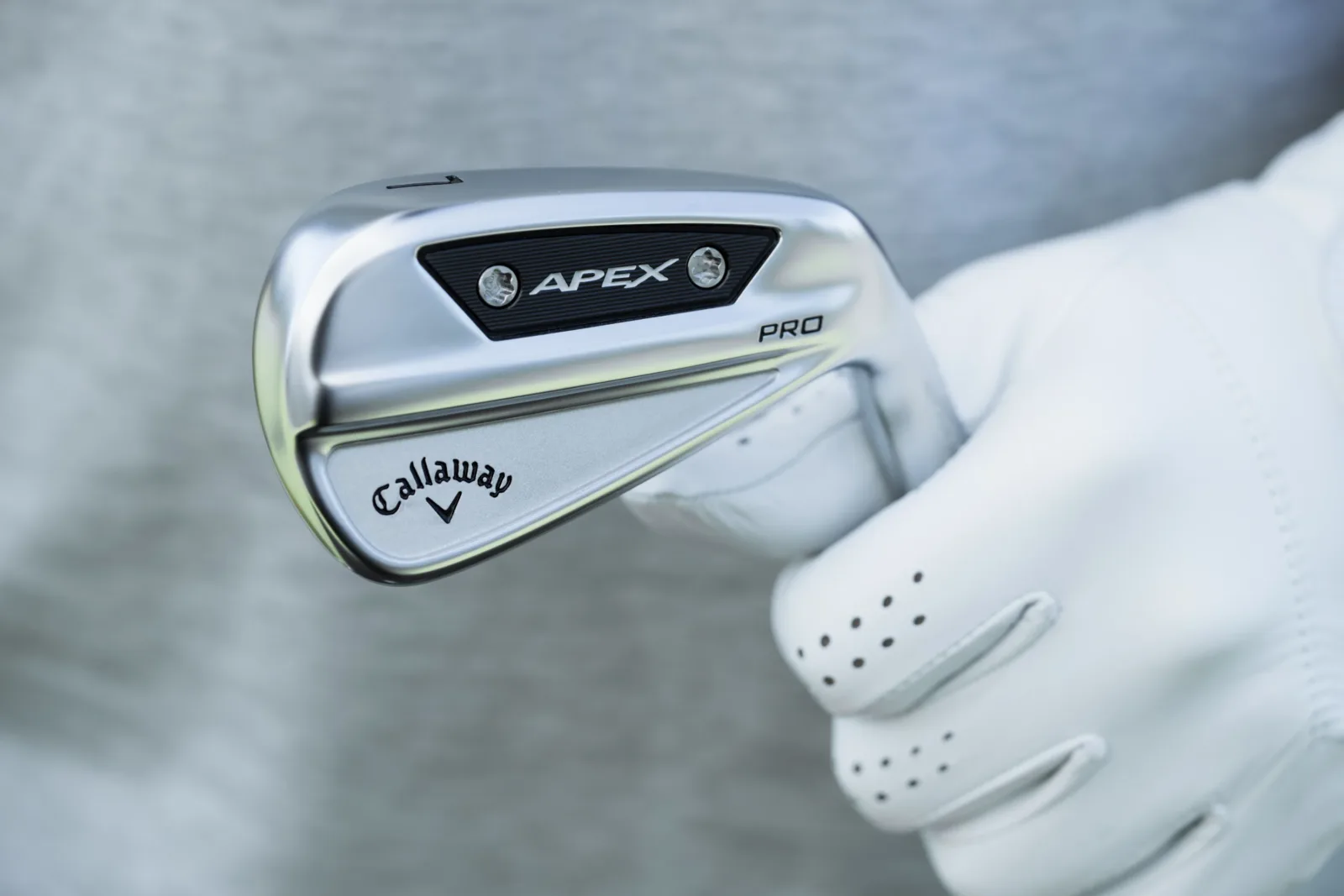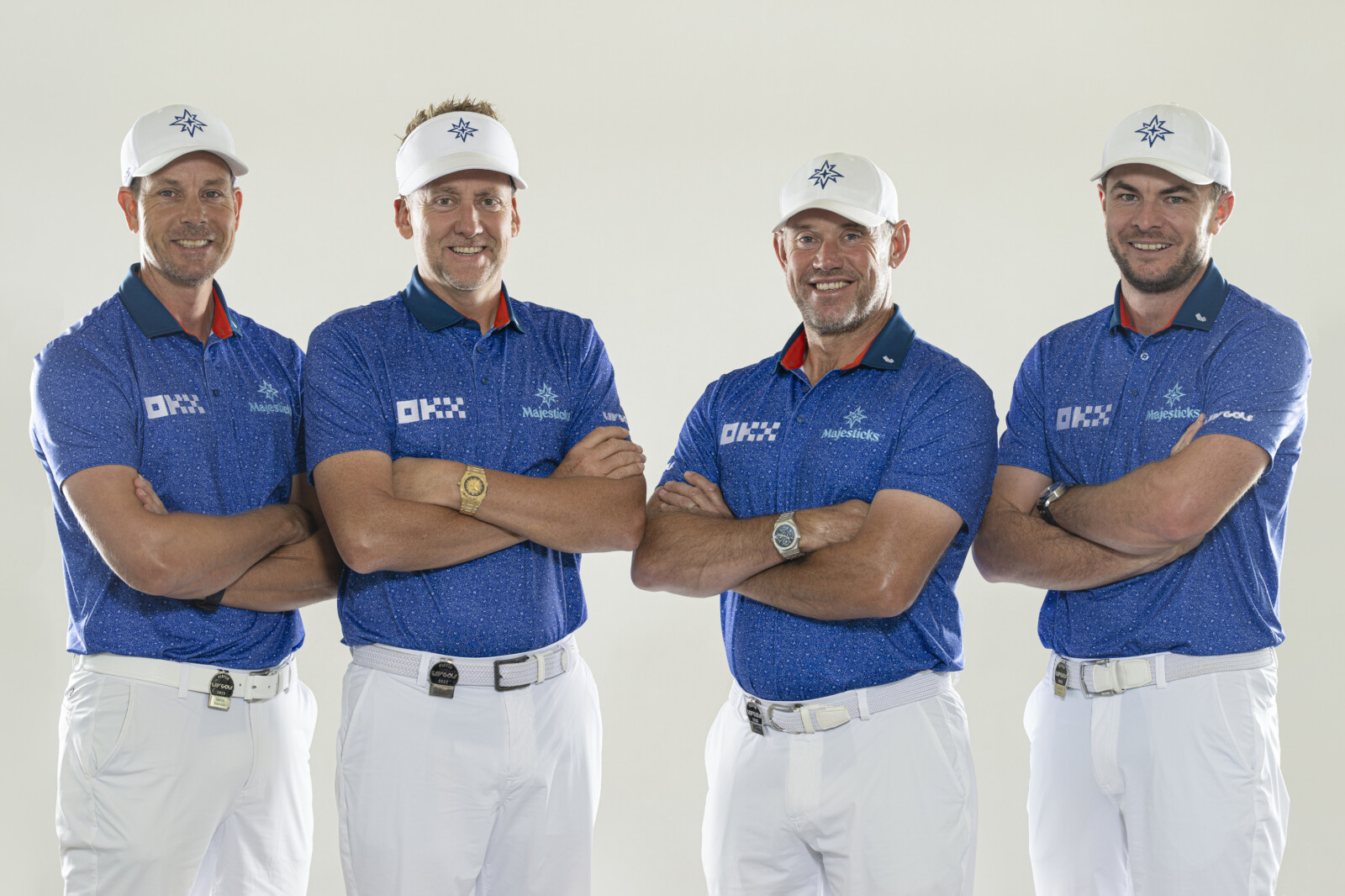Whenever Sub 70 golf clubs or equipment from any direct-to-consumer company comes up for discussion, there’s almost always the same litany of laments.
“If I can’t get fitted for it, I ain’t buying it!”
“No fitting or demo? No way!”
“How do they expect me to buy it if I can hit it first?”
Let’s get this on the table right away. There is no substitute for a first-rate custom fitting with a first-rate custom fitter. But the value proposition and performance offered by DTC companies can be mighty attractive. Irresistible even.
And that leads us to the question of the day:
Is a first-rate custom fitting from a first-rate custom fitter from one OEM transferable to a DTC brand?
The short answer is yes. The long answer is also yes but with several asterisks and caveats.
A Fitting Question
Iron fittings can be transferable from one OEM to another, provided the iron category is consistent. Back in 2015, Steve Junkroski from Wilson Staff fitted me into a set of FG Tour V4 irons with S-flex KBS C-Taper shafts, 2-degrees flat. A follow-up fitting at the 2nd Swing Tour Van in Minneapolis validated the Wilson fitting to a tee, albeit with a forged TaylorMade cavity back. Distance, trajectory, spin and other key metrics were remarkably similar to the point of being virtually indistinguishable.
Things do change over eight years. At 62, the 120-gram C-Taper is but a fond memory and has been replaced by the 105-gram C-Taper Lite. This past April, COBRA master fitter Brandon Dickinson fitted me into a COBRA KING Tour/KING CB combo set with a shaft I hadn’t played before – the Nippon Modus3 105 shaft in R-flex, one degree flat.

To compare, we went with the Sub 70 659 Forged CB irons, but with a slightly different spin.
“We look at your fitting like doctor’s notes,” says Sub 70 owner Jason Hiland. “We can look at a fitting and piece it together into our stuff, just like someone from another company could do the same in reverse.”
The different spin? We chose a shaft that on the surface appears to be in the same category as the Nippon. In reality, it gave us some quite interesting results.
Nippon Vs. Dynamic Gold
For comparison, we chose to equip the Sub 70 659 Forged CB irons with the Dynamic Gold 105 (.370 parallel tip). As the name suggests, it’s similar in weight to the Nippon, and True Temper classifies it as a mid-launch/mid-spin shaft. Nippon, by comparison, says the Modus3 105 is also a mid-launch/mid-spin shaft.
According to the Maltby Playability chart, both shafts feature the same torque (1.9) and bend points (high). The DG tip stiffness is categorized as “mid” while the Nippon tip stiffness is “mid/firm.” Maltby calls the DG a low/mid-launch shaft while the Nippon is decidedly mid-launch.

The iron heads themselves are similar, but they’re not the same. The COBRA set includes the KING Tour in the 5- through 7-irons and the KING CB in the 8-iron through pitching wedge. The Sub 70 659 forged CBs straddle the line between the KING Tour and CB. They have less offset than the TOUR but more than the CB. The loft structure is more in line with the KING Tour.
We learned some interesting things with a spec check on both 7-irons done by Steve Thomson, a fitter and instructor at the Golftec location in Danvers, Mass.
The COBRA KING Tour 7-iron measured 37 inches instead of the 37.25 inches specified in the fitting. The Sub 70, however, was spot-on at 37.25. The COBRA loft was on spec at 32 degrees while the Sub 70 was a half-degree stronger at 31.5 degrees. Both had the specified lie of 60.5 degrees.
Some Interesting Differences
Using a laser frequency machine, the COBRA/Nippon measured out at 299 CPM. The Sub 70/DG 105 registered 281 CPM. That indicates the Nippon is a wee bit stiffer and a wee bit heavier than the Dynamic Gold. The EI analysis for each shaft shows the Nippon with a slightly softer tip, which makes sense since it’s a higher launching shaft. However, the higher frequency indicates the Nippon will have a firmer feel, even though both shafts are categorized as “R-flex.”
“For different OEMs with different shafts assembled by two different builders, those irons are pretty darned close,” says Thomson. “Not exactly the same, but close enough.”
How close? Here’s what the launch monitor had to say.

The relative tip stiffness between the two shafts is evident in the launch angle difference. The four MPH difference in ball speed is a little harder to sniff out. Sure, the slightly longer shaft and slightly stronger loft contributed. But add the specific DG 105 bend profile to how the golfer was swinging that day and you get the perfect storm. But that four MPH increase did come at a price.
The stats show the Sub 70 659 Forged CB 7-iron with three yards (or nine feet) of leftness. At first, I thought it might be related to offset, but the Sub 70 7-iron actually has a quarter of a millimeter less offset than the COBRA KING Tour. And since a similar level of draw bias was consistent throughout the set, it comes down to a combination of the head itself, the shaft itself and how the combination performs for this particular golfer.
By comparison, the Nippon/COBRA combo plays to a consistent minimal, if non-existent draw.
And no, I’m not a good enough golfer to “work” the ball on command.

Sub 70 650 Forged CB: On the Course
Launch monitor numbers tell one story but the golf course is where it matters. During a round at George Wright, the classic Donald Ross municipal course in Boston, the distance difference was evident on the very first hole.
A 150-yard approach from light rough (a flyer lie) would normally be a COBRA 8-iron that would land short of the pin and roll a bit (I play a Bridgestone Tour B RXS). But with the Sub 70 659 Forged CB 8-iron, that sucker hit pin-high about 10 feet left and rolled off the back of the green. A few holes later on an uphill, 147-yard par-3, a well-struck 9-iron landed and stuck eight feet to the right of the pin ( I aimed right). Ordinarily, I’d have hit the 8.
On the par-5 16th, a pitching wedge from 135 feet was the shot of the day, finishing a foot-and-a-half from the cup (sadly, it was a tap-in double-bogey). With COBRA, that would have been a soft 9-iron. The draw bias took some getting used to as more than a few approach shots finished left of the target. As mentioned, working the ball is not part of my game, so it took a while to adjust.

The draw bias did help on that pitching wedge on 16, as it helped avoid some branches. And on the 185-yard par-3 15th, the draw bias helped the shot ride the contour in front of the green from right to left. The ball rolled toward the pin, coming to a halt maybe 12 feet short. Unfortunately, the green had a steep slope that crested 11.5 feet from the pin. The ball rolled off the front slope and off the green, leaving a 25-yard chip.
Sub 70 Golf Clubs: A Question of Fitting
This little experiment tells us two important things.
First, fittings are transferable as long as the iron heads in question are in the same category. In general, the better the golfer, the more transferable the fitting. However, since the heads aren’t identical – different offsets or CG locations, for example – there’s no way performance will be identical.
Second, and it’s the reason we went with a slightly different shaft, is that those slight differences can matter. While both shafts are labeled “R-Flex” and are close in overall weight, they play differently. If we put the same shaft in each head, the performance would have been closer. But getting the specs identical from two different OEMs is unrealistic.

First, two different humans are building the clubs. Additionally, while there is a manufacturing tolerance range in each specific component of the finished club, it’s still a range. A shaft supplied by one OEM may be on one end of the acceptable tolerance range while that same shaft supplied by a second OEM might be on the other end.
Trying to eliminate all variables. including lofts, is a noble idea. It just isn’t terribly realistic. What is realistic, however, is building club heads from the same category to a specific set of target specs. Even with different shafts, we found that launch and descent angles, peak height and backspin were remarkably close. The differences lay in ball speed, carry distance and spin axis, which resulted in more draw.
“The right shaft weight, flex profile and kick point, all that becomes more precise as the player gets better,” says Hiland. “There are nuanced differences between shafts but you have to hit the ball in the center pretty much every time on the same path to see what those differences might be.”

What Does This Mean to the DTC Customer?
While you can transfer your in-person fitting to a Direct-to-Consumer online purchase, there are some things to remember.
First, make sure the iron head category is the same. A Player’s Distance iron won’t have the same loft, weight, blade length or CG as, say, a Player’s Cavity Back. The same shaft may perform adequately in both, but you may be leaving some performance on the table.
Additionally, shafts that seem similar may in fact perform differently enough to leave you scratching your head a bit. While we definitely appreciated the extra distance in our experiment, it came at a cost of a little extra draw. At that point, it’s up to the golfer to adjust to it or have some adjustments made to the club.

“You do have a 60-day guaranty, so we do have your back,” says Hiland. “Do we have to have a tweak? Are we a bit off on the lie angle and it’s drawing too much? We can take care of that.”
Either in-person or second-hand via DTC, fitting is a process. An in-person fitting fits you into how you’re swinging that day, and tweaks may be needed as the golfer puts their new irons in play. But for golfers who still aren’t comfortable with buying online and who insist on being fit into the actual club head, the traditional path to purchase remains the best choice.
“That’s why other brands are out there,” says Hiland. “Maybe our brand isn’t the best fit for you. We care and we want you to play better with our clubs. But if that’s not the right vibe I’ll tell people that every major golf manufacturer is making wonderful equipment.
“We’ll shut the whole thing down before we’ll make a sale just to make a sale.”



